Visiting Angkor Wat in Siem Reap
A Day Of Wonder In Cambodia
CAMBODIA
Adam Shaw
1/27/20256 min read
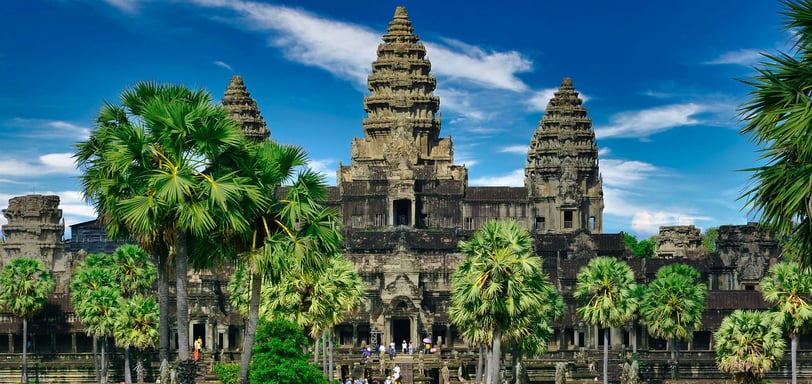

If you are a lover of temples , you have to visit Angkor Wat in Siem Reap! This temple is an iconic symbol of Cambodia's rich heritage and one of the most amazing examples of ancient architecture in the world.
Quick Facts
Angkor Wat is the worlds largest religious monument, spread over 400 acres.
The name Angkor Wat translates to 'City of Temples' in Khmer.
Listed as a UNESCO World Heritage Site in 1992.
The site consists of more than 1000 temples.
Built in the 12th century by King Suryavarman II.
Originally built as a Hindu temple dedicated to the god Vishnu, but gradually turned into a buddhist temple towards the end of the 12th century
I have visited Angkor Wat and its surrounding temples twice over the past 5 years, and it is such a brilliant experience. The complex is truly something special, with the remarkable architecture and sheer vastness of the site, spread over 400 acres. Here’s my guide to help you make the most of your visit.
Getting Ready For Your Visit
As mentioned, the site is incredibly vast, and the tropical climate can be challenging if you’re not prepared. So would recommend wearing lightweight and breathable clothing, as temperatures in Siem Reap can be hot and humid all year round. Since Angkor Wat is a sacred site, you will need to wear modest clothing, ensuring your shoulders and knees are covered. I wore trousers on my visit, however I did notice several males had long shorts on, which appeared to be acceptable.
You should pack essentials like sunscreen, a hat, sunglasses, bottle of water and comfortable walking shoes. It’s also a good idea to carry a small guidebook or download a map of the Angkor Archaeological Park to help you navigate the expansive grounds if you do not have a guide with you.
I organised a tuk-tuk driver to take me there through the hotel I was staying at, which was only about a 10 minute drive from the the centre of Siem Reap. You can however buy tickets in advance for group tours if you wish through trip.com
Starting Your Day: The Sunrise at Angkor Wat
An absolutely breath taking experience is to witness the sunrise over the temple’s silhouette. You would need to make an early start for this and arrive at the temple by about 5am. The best spot is by the reflecting pond, where you can witness the sight of the temple’s spires mirrored in the water, as the sun lights up the sky in pink and orange tones. You'll be able to capture some amazing photos at this time.
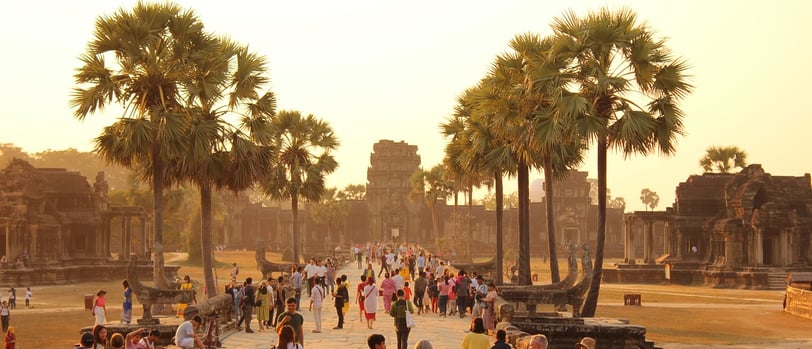

Exploring the Main Temple
Once the sun is up, you can move on to exploring the main Angkor Wat temple complex. Built in the early 12th century during the reign of King Suryavarman II, Angkor Wat was originally a Hindu temple dedicated to Vishnu before later transitioning into a Buddhist site.
On the approach to the temple, you’ll cross a wide stone causeway which leads to the grand entrance. There are some amazing intricate carvings here that depict scenes from Hindu mythology. I found the level of detail in these carvings astounding, with each panel telling a story.
A highlight for me, was climbing to the upper levels of the temple, as once at the top you have uninterrupted panoramic views of the complex and surrounding jungle. The central tower, symbolising Mount Meru (the centre of the universe in Hindu cosmology), is the highest point of the temple and has a very peaceful atmosphere. Please note however, the steps up to the top are very steep and not for the faint hearted!
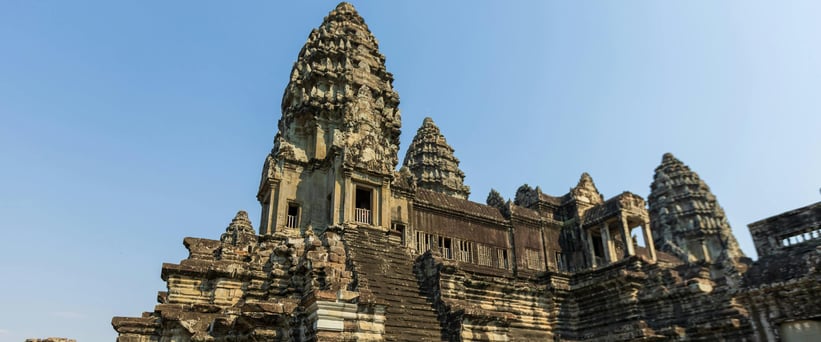

Mid Morning: Exploring the Surrounding Temples
Once you've been around the main temple, you can then venture out and explore the rest of Angkor Archaeological Park. A tuk-tuk is the best way to get around, and hiring a knowledgeable driver is the best way to make the most out of your visit. Many drivers double as informal guides and are happy to share stories about the temples and Cambodian history.
I started with Angkor Thom, which was the last capital of the Khmer Empire. It has massive stone walls, and within them lies the Bayon Temple, famous for its 54 towers adorned with over 200 smiling stone faces. Walking through Bayon feels like stepping into a mystical world.
From there, I headed to Ta Prohm, which is often referred to as the “Tomb Raider Temple” , due to its appearance in the Lara Croft movie. Ta Prohm is pretty mesmerising, as the surrounding towering trees have entwined their roots through the temple ruins, creating a hauntingly beautiful scene.
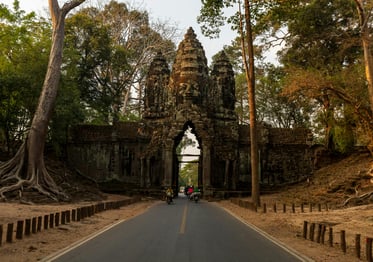

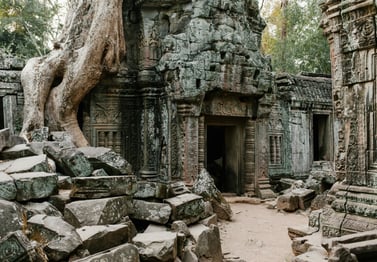

By late morning / early afternoon, you’ll probably be ready for a break. You can head back to Siem Reap for lunch, as is only a short distance, and grab some food at one of its many charming restaurants or cafes. A popular place is Khmer Kitchen Restaurant or one of my personal favourites, Sambo Khmer Restaurant, both serving traditional Cambodian dishes and some Thai. If however you’re just looking for something light and refreshing, a tropical fruit shake is a good choice and very inexpensive.
Lunch Break in Siem Reap
Spend The Afternoon Exploring Lesser Known Temples
After lunch and you've had a much needed break from the heat, head back and spend the afternoon going around some of the lesser known temples. Preah Khan is a hidden gem in my opinion, the temple offers a quieter and more chilled out experience. It is a rather sprawling complex that is partially overgrown with vegetation and features some stunning carvings and narrow corridors to explore.
Another good option is Banteay Srei, which is about 25 kilometers from Angkor Wat. Known as the “Citadel of Women,” Banteay Srei has some absolutely beautiful and intricate pink sandstone carvings, giving you a great example of Khmer art.
If you’re interested in learning more about the history of Siem Reap, then on your way back from Angkor Wat, make a stop at the Angkor National Museum. The museum provides more in depth information about the temples and the Khmer Empire, giving you more context about the incredible sites you’ve explored.

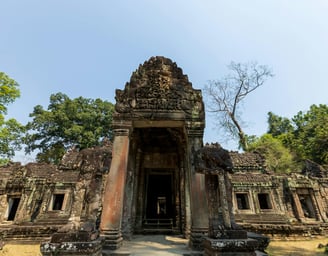
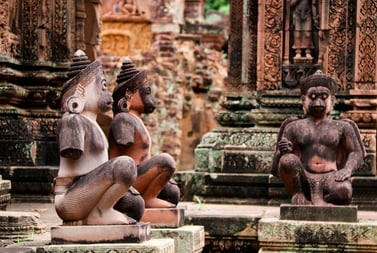

Sunset at Phnom Bakheng
A beautiful way to end your day is to catch the sunset at Phnom Bakheng, a hilltop temple with sweeping views of the Angkor Archaeological Park. I would suggest arriving early, as is popular spot and has a limited capacity. The climb to the top is steep but manageable, although I did have to crawl up parts! The reward however is absolutely spectacular, with a view of Angkor Wat bathed in the raise from the sun setting.


Practical Tips for Visiting Angkor Wat
Tickets: You can purchase your Angkor Pass at the official ticket office before entering the park or on trip.com. Options include a one day pass ($37), a three day pass ($62), and a seven day pass ($72). Ensure you keep hold of your ticket though, as it will be checked at multiple points throughout the day.
Best Time to Visit: The dry season (November to April) offers the best weather, but it’s also the busiest time. Arriving early in the morning helps avoid the crowds.
Hiring a Guide: A licensed guide can be very helpful if you are after more in depth knowledge into the history and symbolism of the temples.
Final Thoughts
For me, a one day pass was enough to explore Angkor Wat and the surrounding temples. It is absolutely worth a visit and one of the best temples I have ever been to. I found it fascinating how the temples were constructed, with all the intricate details and learning about the ancient civilisation there. The sheer scale of the site is truly remarkable. So whether you’re a history enthusiast, a keen photographer or simply a curious traveller, Angkor Wat is a destination that will give you an unforgettable experience.
Get in touch
hello@abundantasiatravel.com
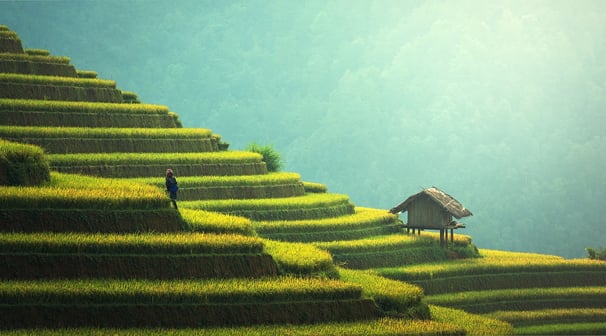

Affiliate Notice
This website uses affiliate links, meaning we may earn a commission if you make a purchase through a link.
